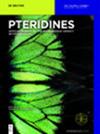Serological ferritin, 100A12, procalcitonin and APACHEII score in prediction the prognosis of acute respiratory distress syndrome
IF 0.9
4区 医学
Q4 BIOCHEMISTRY & MOLECULAR BIOLOGY
引用次数: 0
Abstract
Abstract Objective The aim of the present work was to investigate the prognostic value of serological ferritin, 100A12, procalcitonin (PCT) and APACHEII score in predicting death risk for patients with acute respiratory distress syndrome (ARDS). Methods Forty eight ARDS patients were recruited from Feb. 2016 to Jan. 2019 from Lishui People’s Hospital. According to their prognosis (survival or death within 28 days), these 48 patients were further divided into the survival group (n=28) and death group (n=20). The serological levels of S100A12, PCT and ferritin of the 48 ARDS patients were examined within 24 hours after hospitalization. Demographic characteristics, serum S100A12, PCT and ferritin were compared between the two groups, and diagnostic analysis was performed to evaluate the clinical efficacy of these markers in predicting the death of ARDS patients. Results The serum S100A12, ferritin and APACHEII scores of the death group were significantly higher than those of the survival group (p<0.05). However, serum PCT levels were not statistically different between the two groups (p>0.05). The death prediction sensitivity for serum S100A12, PCT, ferritin and APACHEII score were 65.0 (40.78-84.61)%, 60.00(36.05-80.88) %,75.0(50.90-91.34)% and 85.0(62.11-96.79)% respectively. The death prediction specificity for serum S100A12, PCT, ferritin and APACHEII score were 75.0(55.13-89.31)%, 60.00(36.05-80.88)%, 64.29(44.07-81.36)% and 82.14(63.11-93.94)%, respectively. The area under the ROC curve (AUC) for serum S100A12, PCT, ferritin and APACHEII score were 0.68(0.51-0.84), 0.63(0.46-0.79), 0.71(0.56-0.86) and 0.91(0.83-0.99) respectively. Conclusion Serological ferritin, 100A12, PCT and APACHEII scores can be used as biomarkers to predict the death risk of ARDS patients.血清铁蛋白、100A12、降钙素原和APACHEII评分对急性呼吸窘迫综合征预后的预测价值
摘要目的探讨血清铁蛋白、100A12、降钙素原(PCT)和APACHEII评分对急性呼吸窘迫综合征(ARDS)患者死亡风险的预测价值。方法选取丽水市人民医院2016年2月至2019年1月收治的48例ARDS患者。根据预后(28天内存活或死亡),将这48名患者进一步分为存活组(n=28)和死亡组(n=20)。48例ARDS患者在住院后24小时内检测血清S100A12、PCT和铁蛋白水平。比较两组患者的人口学特征、血清S100A12、PCT和铁蛋白,并进行诊断分析,以评估这些标志物在预测ARDS患者死亡方面的临床疗效。结果死亡组血清S100A12、铁蛋白和APACHEII评分均显著高于生存组(p0.05),血清S100A12PCT、铁蛋白、APACHEII分对死亡预测的敏感性分别为65.0(40.78-84.61)%、60.00(36.05-80.88)%、75.0(50.90-91.34)%和85.0(62.11-96.79)%。血清S100A12、PCT、铁蛋白和APACHEII评分的死亡预测特异性分别为75.0(55.13-89.31)%、60.00(36.05-80.88)%、64.29(44.07-81.36)%和82.14(63.11-93.94)%。血清S100A12、PCT、铁蛋白和APACHEII评分的ROC曲线下面积(AUC)分别为0.68(0.51-0.84)、0.63(0.46-0.79)、0.71(0.56-0.86)和0.91(0.83-0.99)。结论血清铁蛋白、100A12、PCT和APACHEII评分可作为预测ARDS患者死亡风险的生物标志物。
本文章由计算机程序翻译,如有差异,请以英文原文为准。
求助全文
约1分钟内获得全文
求助全文
来源期刊

Pteridines
生物-生化与分子生物学
CiteScore
1.20
自引率
25.00%
发文量
6
审稿时长
>12 weeks
期刊介绍:
Pteridines is an open acess international quarterly journal dealing with all aspects of pteridine research. Pteridines are heterocyclic fused ring compounds involved in a wide range of biological functions from the color on butterfly wings to cofactors in enzyme catalysis to essential vitamins. Of the pteridines, 5,6,7,8-tetrahydrobiopterin is the necessary cofactor of several aromatic amino acid monoxygenases, the nitric oxide synthases and glyceryl ether monoxygenase (GEMO). Neopterin plays an essential role in the immune system and is an important biomarker in laboratory medicine for diseases such as HIV, cardiovascular disease, malignant tumors, among others.
Topics:
-Neopterin, dihydroneopterin, monapterin-
Biopterin, tetrahydrobiopterin-
Folates, antifolates, riboflavin-
Phenylalanine, tyrosine, phenylketonuria, serotonin, adrenalin, noradrenalin, L-DOPA, dopamine, related biogenic amines-
Phenylalanine hydroxylase, tyrosine hydroxylase, tryptophan hydroxylase, nitric oxide synthases (iNOS), alkylglycerol monooxygenase (AGMO), dihydropterin reductase, sepiapterin reductase-
Homocysteine, mediators of inflammation, redox systems, iron.
 求助内容:
求助内容: 应助结果提醒方式:
应助结果提醒方式:


